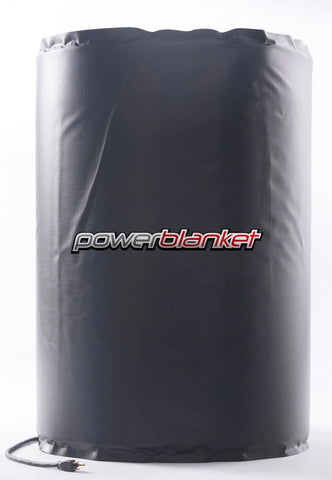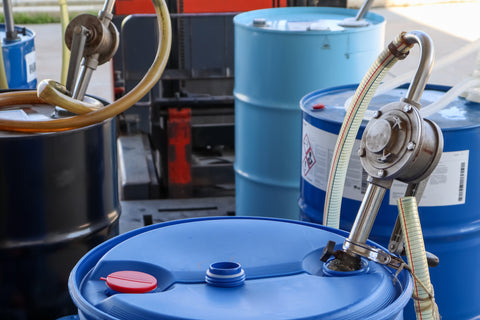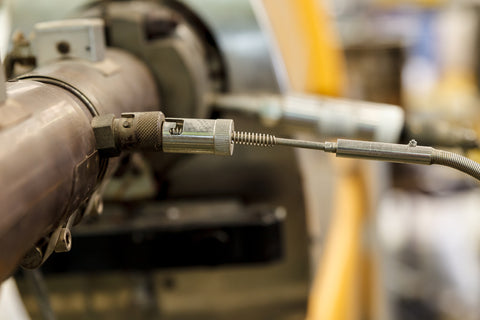Safe Transport for Shipping Drums
Shipping industrial drums can be a challenging task, especially if you are not familiar with the regulations and guidelines to follow. In this article, we will provide you with tips and tricks to help you master the art of shipping industrial drums safely. Shipping industrial drums safely is of utmost importance as it ensures the protection of the materials being transported, as well as the individuals handling them. Moreover, adhering to the proper shipping regulations and guidelines ensures that your shipment is legally compliant. Finally, we will also discuss the importance of incorporating keywords in your content and how it helps in ranking your article in search engines. With that said, let's dive into the world of shipping industrial drums.

Regulations and Guidelines to Follow for Shipping 55-Gallon Drums
Shipping industrial drums requires complying with specific regulations and guidelines set by regulatory authorities. These rules aim to ensure safety during transportation and prevent damage to goods or injuries to people.
- Overview of Regulations: The regulations for shipping industrial drums vary depending on the type of material packaged inside the drums, mode of transportation, national and international regulations, among others. For instance, the United States Department of Transportation (DOT) sets regulations for the shipment of hazardous materials, controlling the transportation of hazardous goods by road, water, rail, or air.
- Legal Requirements for Shipping Industrial Drums: When shipping, it is crucial to follow the legal requirements concerning paperwork, permits, or licenses. A shipping company must provide shipping documents such as a bill of lading or freight bill that outlines the shipped product's details.
- Packaging Guidelines for 55-gallon Drums: Packaging guidelines outline how to pack industrial drums safely to prevent damage to the goods or harm to the handlers. It involves using the right packaging materials, including pallets or skids, to protect the drum's bottom against damage.
- Labeling and Marking Requirements: Labeling and marking requirements are an essential part of shipping industrial drums. These requirements ensure that the handlers can identify the drums' contents, transport information, and any potential hazards. Some of the marking requirements include the drum's weight, the shipper's name and address, and the consignee's destination address.
As a shipper or handler of industrial drums, it is crucial to familiarize yourself with these regulations and guidelines to ensure safe and compliant transportation.
Understanding the Different Types of Industrial Drums
When it comes to shipping industrial drums, it's essential to understand the different types and sizes of drums and identify the specific drum you are shipping. Industrial drums come in various materials such as steel, plastic, and fiber, and can range from 5 to 110 gallons or more. Each type of drum has unique characteristics and requires specific packaging and handling procedures.
Identifying the type of drum you're shipping is critical because the packaging requirements will differ based on the drum material and any contents inside. For example, a steel drum may require more cushioning and support than a plastic drum because it can dent more easily.
Choosing the right packaging for your specific drum is also crucial. Whether you're using corrugated boxes, fiber drums, or pallets, selecting the appropriate packaging will ensure that your drum is protected during transit. Additionally, proper labeling and marking of the packaging is a requirement under federal regulations to identify the hazard level of the contents and alert handlers of any dangerous materials.
By understanding the different types of industrial drums and selecting the right packaging, you can ensure that your drum arrives at its destination safely and securely.
Preparation before Shipping
When it comes to preparing industrial drums for shipping, there are several steps you can take to ensure safe transportation. First and foremost, it's important to inspect the drum and make sure it is in good condition. Any damage or defects should be addressed before shipping. This includes checking for leaks or corrosion, repairing any dents or cracks, and removing any residual materials.
Next, you'll need to choose the right pallet or skid for your drum. The pallet or skid should be sturdy enough to support the weight of the drum and should be sized appropriately for the specific drum you are shipping. It's important to make sure the pallet or skid is in good condition and is free from any damage or defects that could compromise its stability.
Once you have selected the appropriate pallet or skid, the drum should be loaded and secured onto it. This can be done using straps or bands to hold the drum in place and prevent it from shifting during transport. It's important to make sure the drum is centered on the pallet or skid and is not overhanging in any way.
Finally, the drum should be covered and wrapped to protect it from outside elements during transport. You can use plastic wrap or shrink wrap to securely cover the drum and provide additional stability.
By taking these steps to prepare your industrial drums for shipping, you can ensure they arrive at their destination safely and without incident.

Choosing the Right Shipping Method
When it comes to shipping industrial drums, choosing the right shipping method is crucial for ensuring that the drums arrive at their destination safely and on time. Here are some factors to consider when choosing a shipping method:
- Overview of different shipping methods: There are several shipping methods available, including ground transport, air freight, and sea freight. Each method has its advantages and disadvantages depending on the distance, destination, type of drum, and urgency of the delivery.
- Choosing the method best suited for your specific drum: Consider the size, weight, and contents of the drum when choosing a shipping method. For example, if you are shipping hazardous materials or liquids, air freight may not be a safe option, and sea freight may be the best choice.
- Factors to consider when choosing a shipping method: In addition to the drum's size, weight, and contents, you should also consider the cost, transit time, and destination when choosing a shipping method. It is essential to factor in any potential delays, restrictions, or additional fees when making your decision.
Ultimately, the goal is to choose a shipping method that is safe, cost-effective, and reliable for your specific drum and destination. Taking the time to research and carefully evaluate your options can help ensure a successful shipment.
Tips and Tricks for Safe Transport
When it comes to shipping industrial drums, there are some best practices you can follow to ensure a safe and successful transport. Here are some tips and tricks to keep in mind:
Best Practices for Safe Transportation
- Use a reputable carrier with experience in shipping industrial drums
- Ensure the drum is properly packaged, labeled, and marked according to regulations
- Use a pallet or skid that can handle the weight of the drum and provide adequate support
- Use a strong and durable wrap or cover to protect the drum from damage
- Use proper lifting techniques when loading and unloading the drum
Common Mistakes to Avoid
- Overloading the drum or skid beyond its weight capacity
- Using insufficient packaging or wrapping materials
- Failing to properly label and mark the drum according to regulations
- Not properly securing the drum to the pallet or skid
- Misinterpreting the regulations and guidelines for shipping industrial drums
Special Considerations for Specific Types of Drums
- For hazardous materials, follow the specific regulations and guidelines for shipping that material
- For drums with liquids or powders, use proper filling and venting techniques to prevent spills or leaks
- For drums with delicate or sensitive contents, consider using additional padding or cushioning during transport

By following these tips and tricks, you can help ensure a safe and successful transport of your industrial drums. Remember to always prioritize safety and compliance with regulations and guidelines.
Master the Art of Shipping Industrial Drums
In conclusion, mastering the art of shipping industrial drums is essential to ensure the safe transport of these goods. From understanding the regulations and guidelines to follow to choosing the right packaging and shipping method, there are many factors to consider when transporting industrial drums. By following the tips and tricks outlined in this article, you can ensure that your drums arrive at their destination safely and effectively. Remember to always inspect and prepare your drums, choose the right shipping method, and follow all legal requirements and packaging guidelines. With these tips in mind, you can become an expert in shipping industrial drums and ensure the safe transport of these valuable goods. So, don't hesitate to learn more about this important topic and start mastering the art of shipping today.








